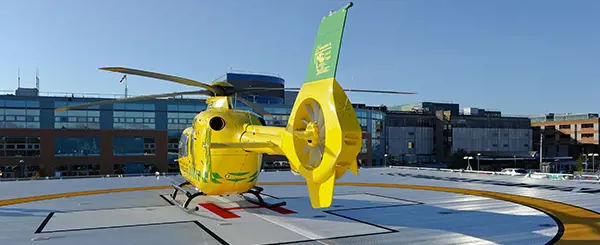My original plan was to write a blog on the outcome of the Greater Manchester Combined Authority Mayoral election on 4th May, Andy Burnham’s first month in office and the impact on the Greater Manchester Spatial Framework [GMSF]. So much for plans. These seemingly important issues have been completely dwarfed by the horrific terrorist attack that took place at 10:30pm on 22 May 2017 in Manchester.
This was without question one of the most challenging scenarios that any public figure can face, particularly so soon after taking office.
Prior to the attack, it may not have been obvious to all quite how important the mayoral race was to Manchester’s future, particularly in the context of the snap General Election on 8th June 2017. However, Andy Burnham’s actions in response to all these events has brought the Mayor’s powers into sharp focus.
Whilst not all Greater Manchester residents may be aware, the Mayor has control over the following:
- Policing: in effect, replacing the Police and Crime Commissioner.
- Fire service: previously managed on a Council by Council basis.
- Spatial planning: has a pivotal role in the adoption or otherwise of the Greater Manchester Spatial Framework.
- Housing: overseeing the administration of a £300m housing fund.
- Transport: tasked with road management responsibilities currently managed by TfGM including road safety, bus lanes and congestion as well as influence over bus services, the tram system and cycling schemes.
- Influence over NHS spending in Greater Manchester.
Those that followed the news in the aftermath of the 22 May attack will be aware that Mr Burnham put his autonomous powers as Police and Crime Commissioner into action, regarding information sharing with the US.
He was also one of the first public figures to spring into action following the Grenfell Tower fire in London on 14 June 2017, by calling for a meeting with all high-rise landlords to explain how they had to have their buildings safety-checked.
Whilst the national press has described the minority Government asgoing from ‘strong and stable’ to ‘weak and wobbly’ in the face of the General Election results and the declining popularity of the Government following the handling of the Grenfell Tower fire, Andy Burnham’s popularity has stood strong.
At a time of ongoing uncertainty nationally, Mr Burnham’s appointment does give a sense of stability to Greater Manchester, even though some of his more assertive pledges, e.g. for no net loss of Green Belt, were not popular (particularly as those in the industry don’t think the emerging Plan does enough to provide the homes and jobs Greater Manchester needs). We have already provided
a synopsis of the GMSF and our views where we suggest that the GMSF does not go far enough, if the Northern Powerhouse is to succeed as a driver for economic growth in the North of England.
However, Andy Burnham’s more strident comments were made when he was in full campaign mode and he has since stated he is broadly happy with the number of homes and jobs proposed. He also remains on board with the concept of the GMSF, unlike his Liberal Democrat opponent. As such, the development industry can breathe a collective sigh of relief that he won’t be throwing the baby out with the bath water any time soon.
Moreover, whilst he is proposing to significantly reduce the amount of Green Belt allocations, this is a much watered down version of his ‘no net Green Belt loss’ pledge.
Mr Burnham has put Salford’s Mayor Paul Dennett in charge of the Plan re-write, with the stated aim of prioritising affordable housing. However, there has been radio silence since the initial announcement and therefore much second guessing about what format the ‘radically re-written’ plan will look like.
There is one matter that is almost certain; Paul Dennett has played a central role in the decisions which led Salford Council to publicly announce their intentions to build new council housing. It is probably no accident that Mr Burnham has appointed Dennett as the portfolio holder for housing, when one of his key pledges is to use the Housing Investment Fund to provide loans to councils and registered providers (RPs) to build affordable homes, including rent-to-own.
Nationwide, there has been a trend away from council-owned housing over the last 30 years, with many local authorities opting to transfer their existing housing stock to RPs. It looks like Greater Manchester could be bucking this trend under Andy Burnham’s term.
Mr Dennett’s public comments regarding affordable housing also closely align with another of Mr Burnham’s election promises – providing a mix of housing and reducing the perceived over-reliance on executive-style homes. Mr Dennett has previously suggested that the Government’s definition of affordable housing is out of touch with the reality for everyday people. This suggests that a range of low cost housing options could be on the agenda, which could be brought forward on greenfield sites and publicly-owned land. Affordable and low cost housing requirements could end up being toned down for constrained strategic sites and development on brownfield land, as Paul Dennett will be well-aware of the issues surrounding viability and affordability which have plagued many of the housing schemes that have come forward in his own authority’s area over the last few years. This is however conjecture at this stage, as details of the re-write have yet to be announced.
Going forward, our view is that:
- Those initial Green Belt site allocations proposed in the first draft GMSF which do not score so highly on the sustainability appraisal within the integrated approach may be at risk of being removed;
- Developers should prepare for increased affordable housing requirements on allocated sites and / or providing a broader mix of housing; and,
- Further delays on the GMSF and final adoption date are almost inevitable.
In summary, Andy Burnham has had an exceptionally strong start to his term in office, and others may have had difficulty navigating the challenges he has had to face. We understand that he has yet to meet with the GMCA which makes it difficult to say with any certainty precisely when he will pick the reins back up. However, this is perhaps understandable given recent tragic events in Manchester and London, which have rightly pulled his attention in a different direction.
For bespoke advice on the implications on the latest events regarding the GMSF and up to date information on its progress please contact our Manchester Office on 0161 837 6130.
Image credit: A.P.S. (UK) / Alamy Stock Photo










